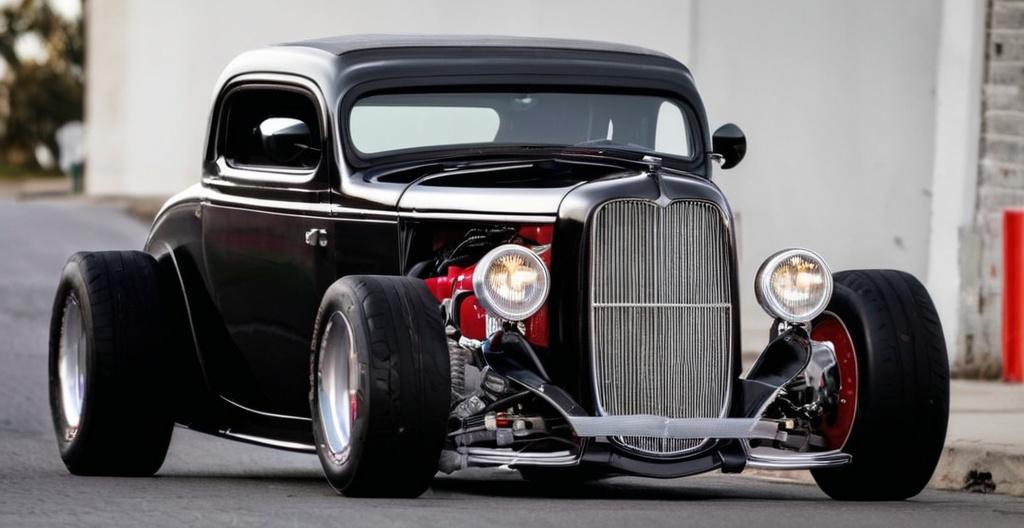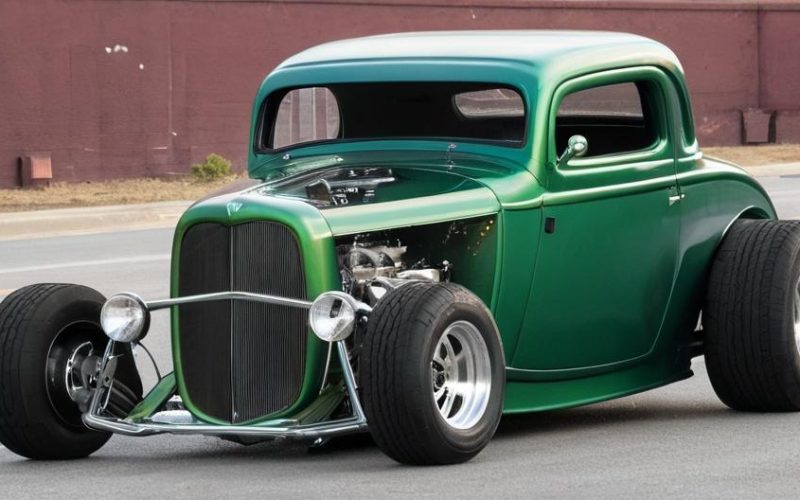Key Take Aways About Two-Tone Paint Jobs and Their Appeal
- The two-tone paint job emerged in the 1950s, reflecting individuality and glamor in car design.
- Popular among street rodders for adding depth, style, and uniqueness to vehicles.
- Techniques include top-bottom splits, side splits, and beltline divisions to accentuate car features.
- Pros include customization and potential value increase, while cons involve maintenance challenges and cost.
- A good two-tone can enhance car value; poor quality or odd colors can decrease it.
- Symbolizes creativity and personal expression in car culture.

Origin and Evolution of Two-Tone Paint Jobs
Back in the day, when cars were more akin to wagons with engines, the concept of style was as straightforward as Henry Ford’s “any color as long as it’s black.” But as folks wanted their rides to reflect their personality, things got jazzy. Enter the two-tone paint job—a style move that threw a splash of color on plain vanilla car surfaces. It’s like swapping your usual white bread for a vibrant marble rye.
The concept took root firmly in the 1950s when car manufacturers thought it wise to offer buyers options beyond the monochrome. It was a time when tailfins soared and chrome glittered, and car owners wanted a slice of that Hollywood glamor for their garage. The demand for two-tones was more than just aesthetic; it was about making a statement, setting a car apart in the ever-congested traffic lanes of style.
Why Two-Tone Paint Jobs Appeal to Street Rodders
Street rodding is as much an art form as it is a hobby. It’s about taking something ordinary and turning it into a rolling masterpiece—and a two-tone paint job does just that. Street rodders look for unique ways to express their personal style and a flashy two-tone can be the cherry on top. It helps a car stand out in a sea of single shades, a way to showcase craftsmanship and add depth to the vehicle’s design.
Two-tone paint jobs can highlight a car’s natural lines and curves, accentuating certain features while downplaying others. It’s an optical illusion that turns heads and gets folks asking, “What ride is that?” It serves no real purpose other than making your car the talk of the street rod show, but isn’t that the real point—catching eyes and starting conversations?
Techniques and Variations in Two-Tone Configurations
When it comes to pulling off a two-tone paint job, there’s more to it than dunking a car in two buckets of paint. Finesse and planning are key. You’ve got your standard top-bottom split, where one color takes the roof and another swaths the main body. It’s the classic Manhattan cocktail of car colors.
Another approach is the side split, with one color adorning the front and another taking over as you move toward the rear. This can be particularly effective on cars with long and sleek profiles, giving an impression of motion even when standing still.
Then there’s the more adventurous beltline division, where a chrome strip or pinstripe separates the two colors. This method emphasizes the car’s waistline, an eye-catching choice that makes the vehicle appear leaner and more dynamic.
Pros and Cons of Two-Tone Paint Jobs
Two-tone paint jobs aren’t all sunshine and rainbows. On the sunny side, they offer a degree of customization that plain single-tone jobs don’t. They can make a car valuable and appealing to collectors, especially when done right by pros in the garage with talent and a steady hand.
On the flip side, they can be a bit of a headache to maintain. Ever tried matching a shade of paint that’s been sun-bleached for a decade? It’s like finding the perfect avocado—nearly impossible. Plus, fixing chips or scratches can be twice the work with two colors. And let’s not forget cost; more paint and labor equals more dough out of your pocket.
Impact of Two-Tone Paint Jobs on Car Value
Investing in a two-tone paint job can be akin to betting on the horse race. It can significantly enhance the value of a classic ride if it’s in good taste and executed professionally. Collectors often pine for such customizations, especially if they capture the essence of a bygone era or a particular style that’s gained traction.
However, it can boomerang if the color choices wander into the realm of the bizarre or if the paint job’s quality isn’t up to snuff. The market likes what it likes, and purple with green polka dots usually isn’t it. A poorly done job can even reduce a car’s value, making it less attractive to potential buyers.
Conclusion
Two-tone paint jobs hold a special place in street rodding and car culture. They are a testament to creativity and individuality, allowing rodders to put a personal stamp on their rides. Whether it enhances the value of the car or simply elevates its aesthetics, a two-tone job is often seen as a badge of honor in the rodding community. Just like everything worthwhile, it demands precision, a good eye for colors, and a bit of daring.
